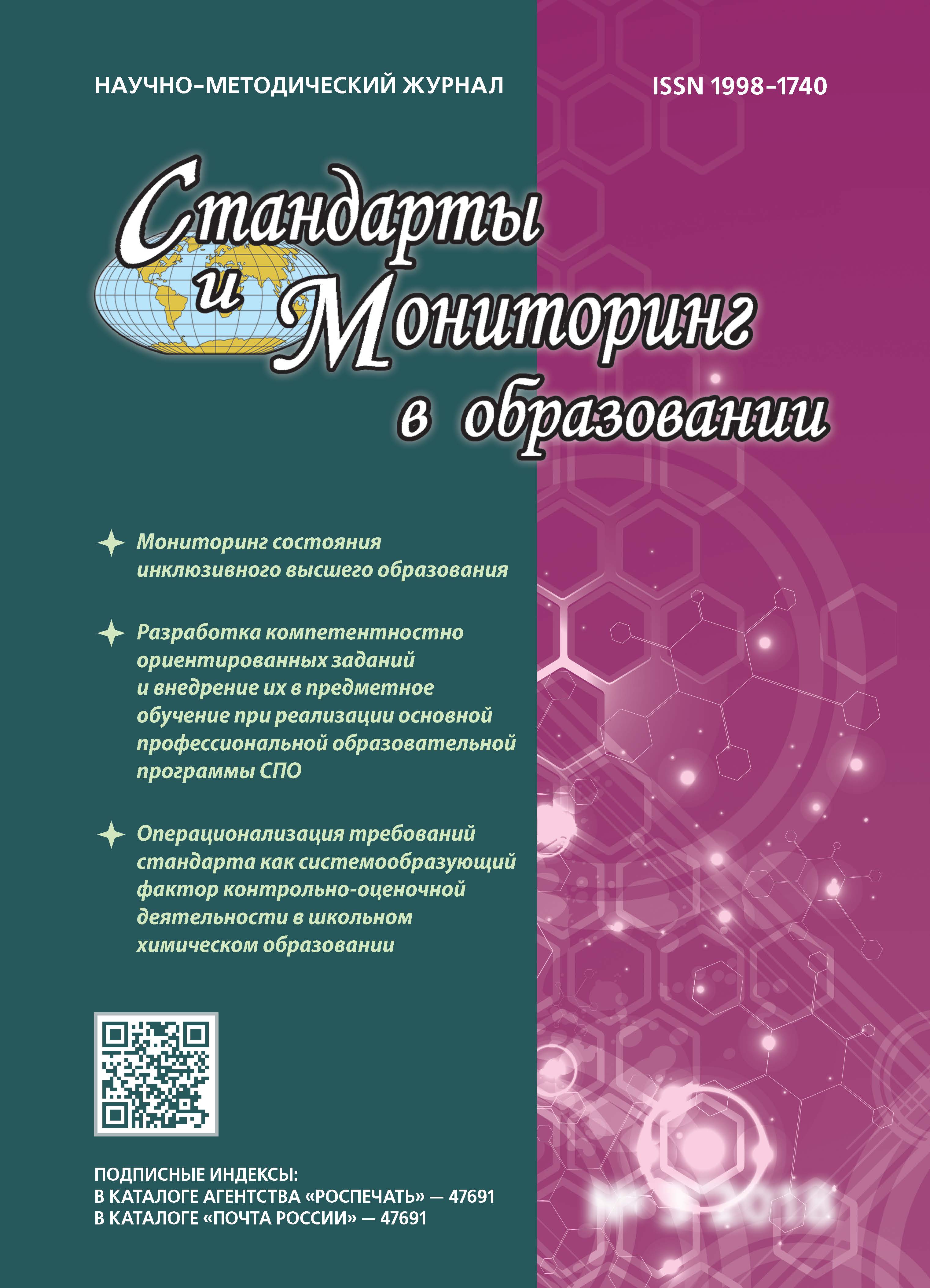The article surveys peculiarities of CDIO – an international framework forengineering programs based on twelve standards of education institutions activity:the context, learning outcomes, integrated curriculum, introduction to engineering, design-implement experiences, engineering workspaces, integrated learning experiences, active learning, enhancement of faculty CDIO competence, enhancement of faculty teaching competence, CDIO learning assessment, CDIO program evaluation. The concept is proven to have common purpose with well-known IWA 2 concept and GOST R 52614.2 – internationaland Russian national standards of education. Key aspects of these standards are evaluated: structures of specified standards are comparable to typical structure of international management standards; CDIO standards specify methods and processes of engineering school. Combined application of CDIO standards and GOST R 52614.2 for engineering education in Russian colleges is recommended.
CDIO framework, PDCA cycle, IWA 2 and GOST R 52614.2 standards, engineering education.
Уже более 20 лет различные организации по стандартизации, прежде всего Международная организация по стандартизации (ISO), разрабатывают международные стандарты в области менеджмента (МСМ). Сегодня опубликованы и используются десятки такого рода стандартов, посвященных менеджменту в самых разных областях, в том числе в образовании [1, 2]1.
Значение стандартов менеджмента трудно переоценить. Они позволяют организациям не тратить время на поиски вариантов реформирования своих систем управления в соответствии с меняющейся внешней средой, а использовать вариант, основанный на достижениях современной теории управления и опробованный на практике множеством лучших компаний во всех странах — именно такова концепция международной стандартизации менеджмента [3].
Сама идея стандартизации менеджмента достаточно проста. Она состоит в том, что в мире существует немало успешных организаций, принципы и методы управления которыми известны специалистам и многократно описаны. Кибернетика давно установила, что все системы управления сложными объектами изоморфны. Поэтому известные принципы успешного менеджмента любой организации вполне могут и должны быть описаны в стандарте или ряде стандартов.
________________
1 Стандарт [2] является российским аналогом [1].
1. IWA 2:2003 Quality management systems - Guidelines for the application of ISO 9001:2000 in education.
2. GOST R 52614.2-2006. Quality management systems. Guidelines for the application of GOST R ISO 9001-2001 in education. (in Russian)
3. Krjukov I. Je., Shadrin A.D. High level structure management systems standard. Problemy teorii i praktiki upravlenija [Problems of the theory and practice of management]. 2013, I. 11, pp. 91-99. (in Russian)
4. ISO 9001:2000 (2008). International standard. Quality management systems - Requirements.
5. ISO/IEC Directives, Part 1. Consolidated ISO Supplement - Procedures specific to ISO. Third edition, 2012.
6. ISO/IEC Directives, Part 1. Consolidated ISO Supplement - Procedures specific to ISO. Third edition, 2012. Annex SL.8 (normative). Guidance on the development process and structure of an MSS. Appendix 3 (normative). High level structure, identical core text, common terms and core definitions.
7. The CDIO™ Initiative. Available at: www.cdio.org
8. Shadrin A.D. On Cybernetic Basis of Management Standardization. Nauchno-tehnicheskie vedomosti SPbGPU [Scientific and technical bulletin of St. Petersburg State Pedagogical University]. 2013, I. 3 (178). St. Petersburg, pp. 73-81. (in Russian)
9. GOST 1.1. Interstate system for standardization. Terms and definitions. (in Russian)






